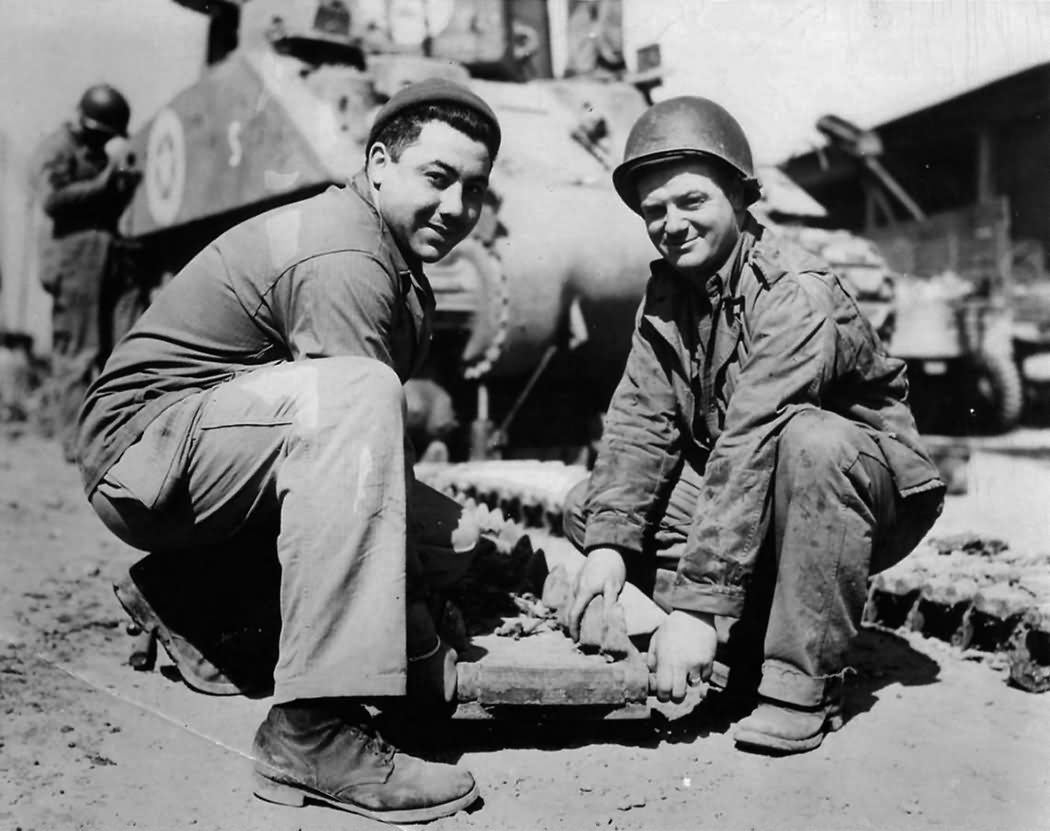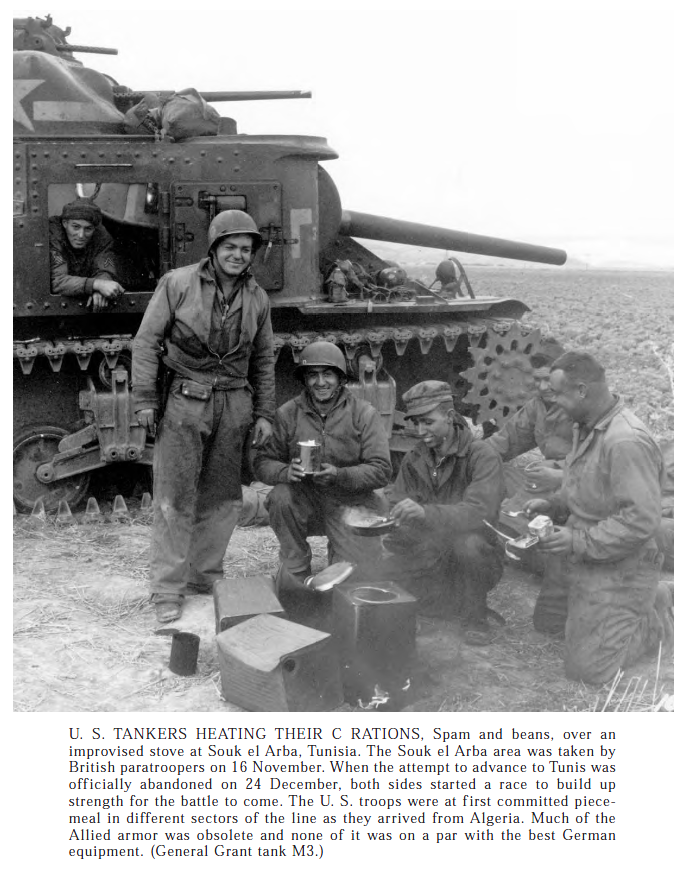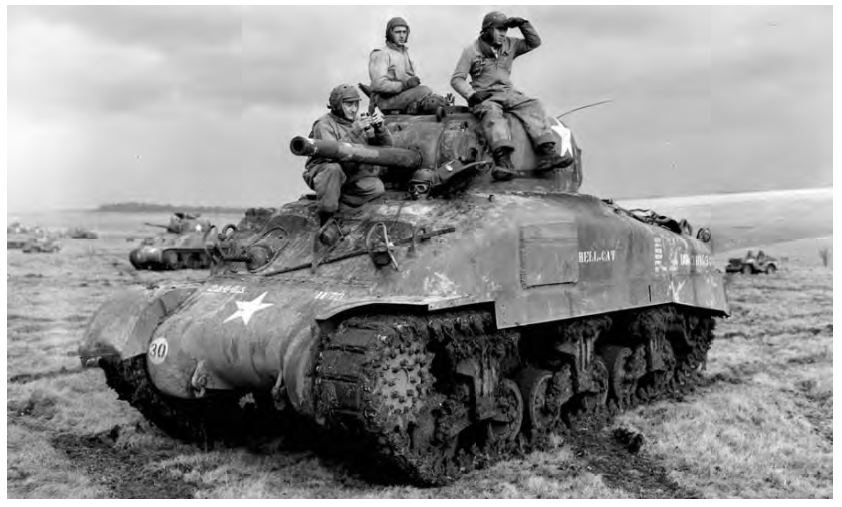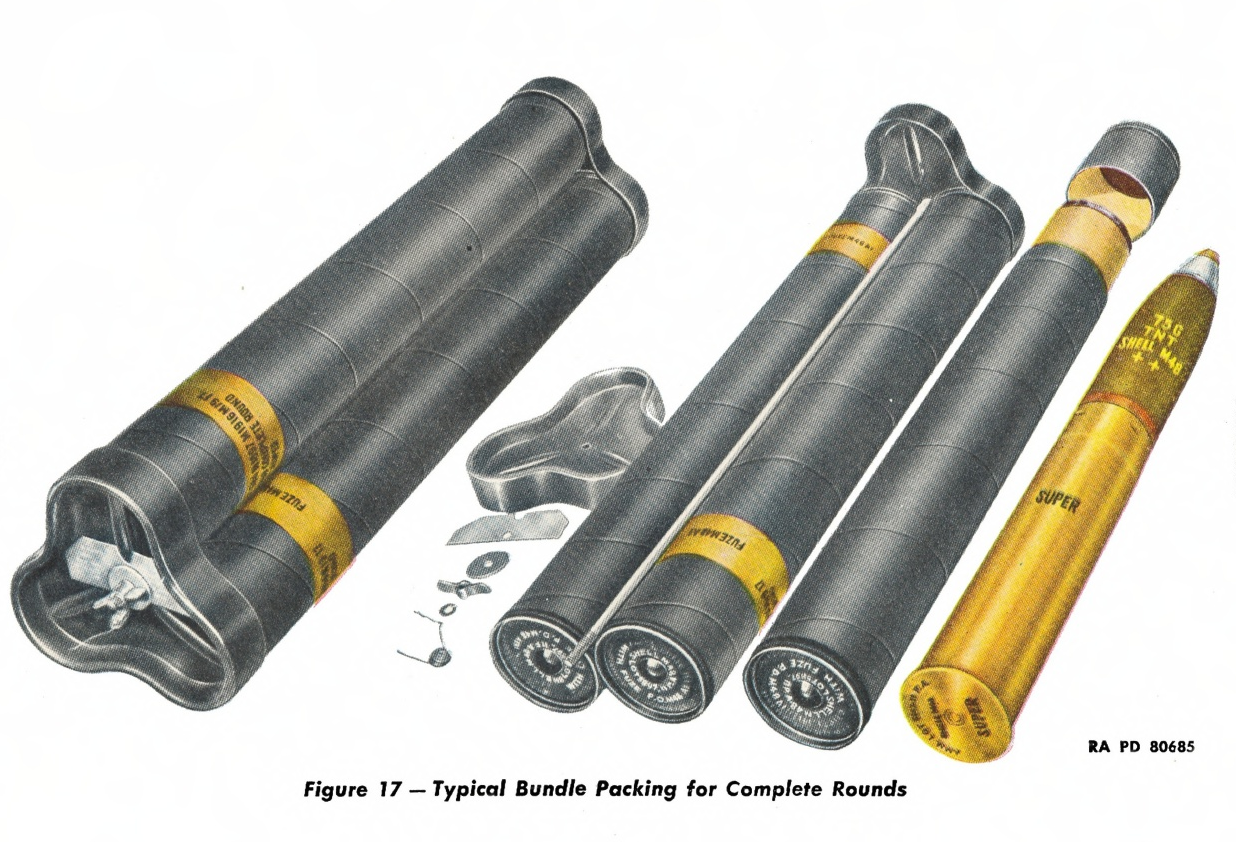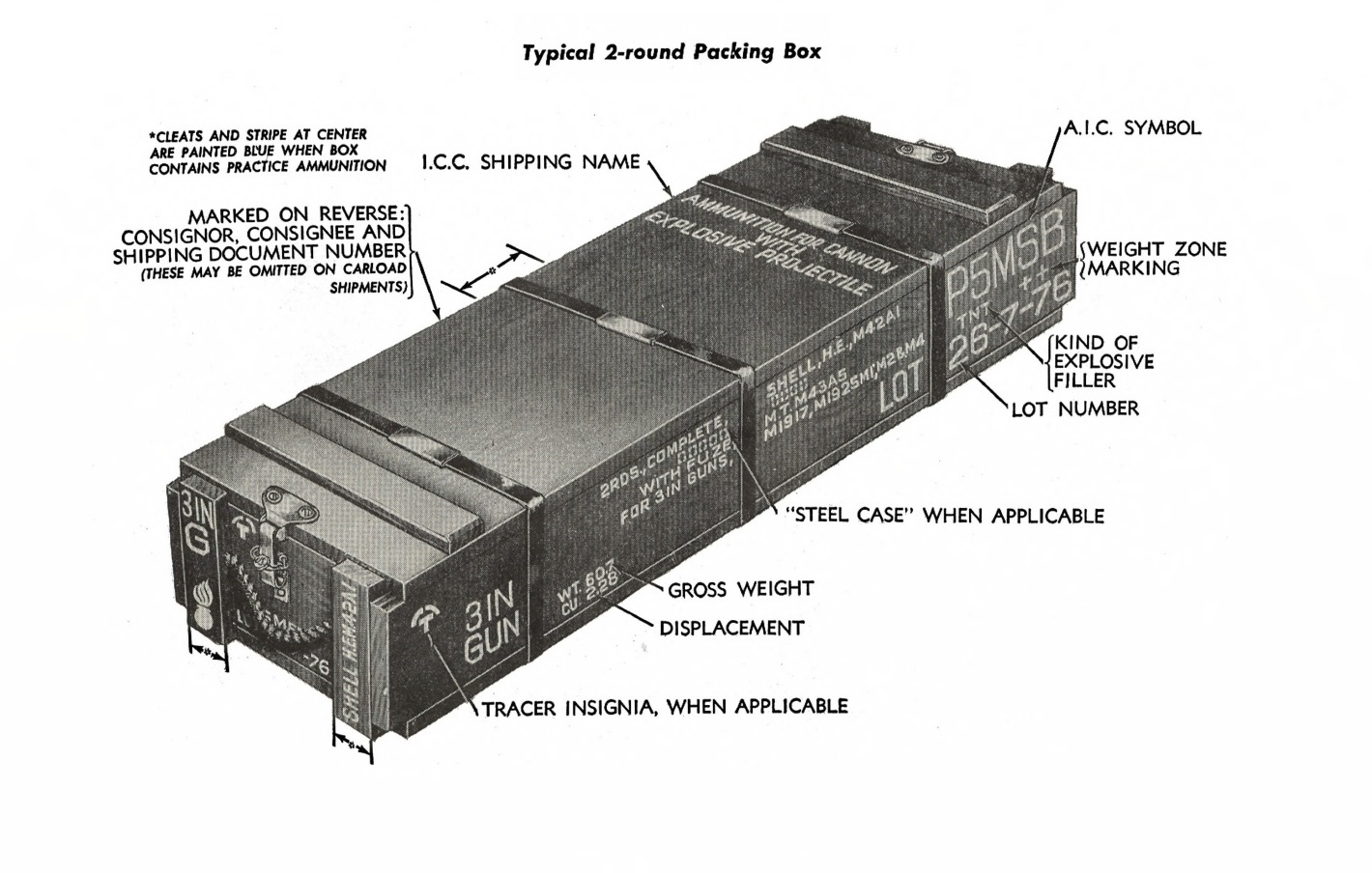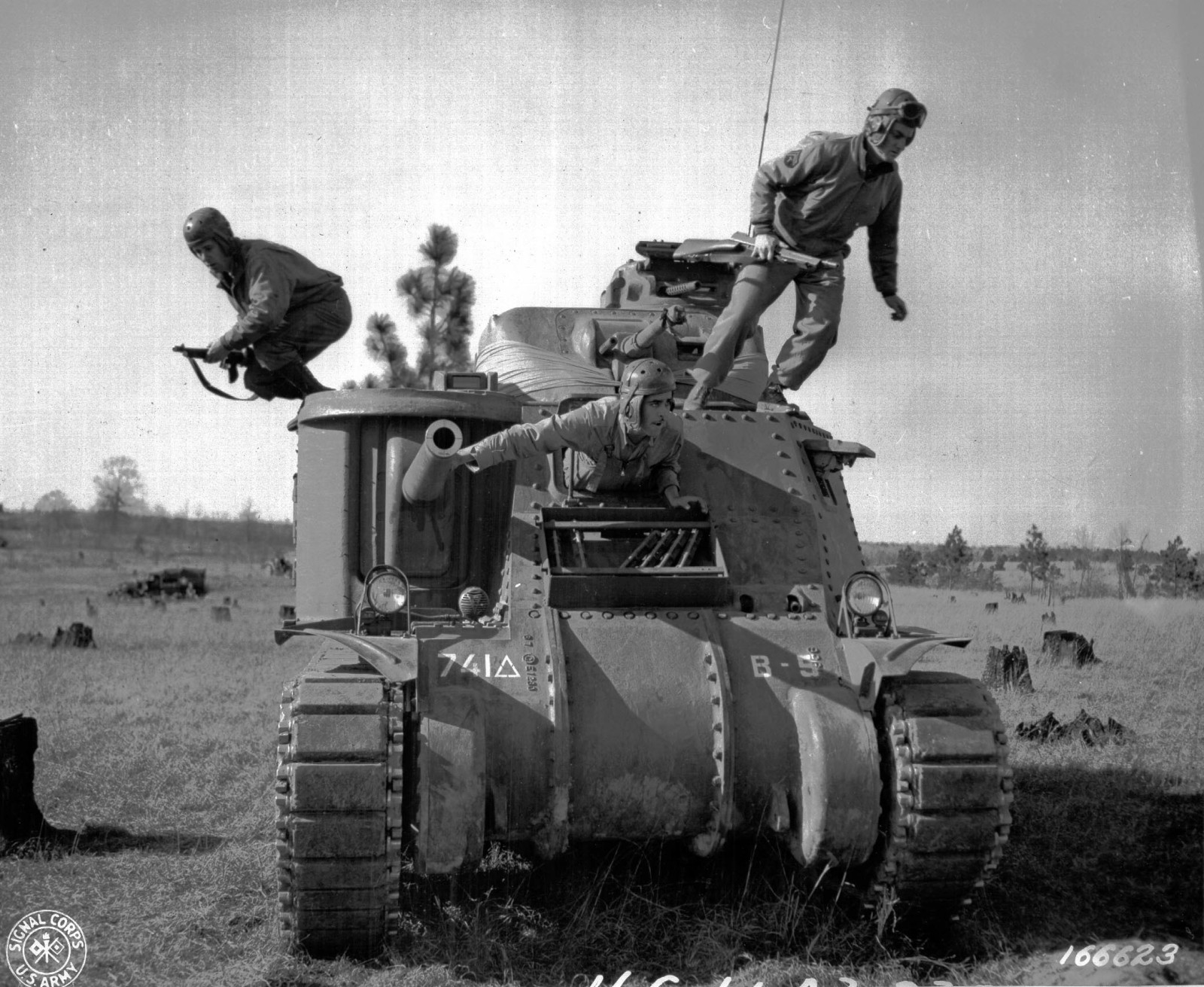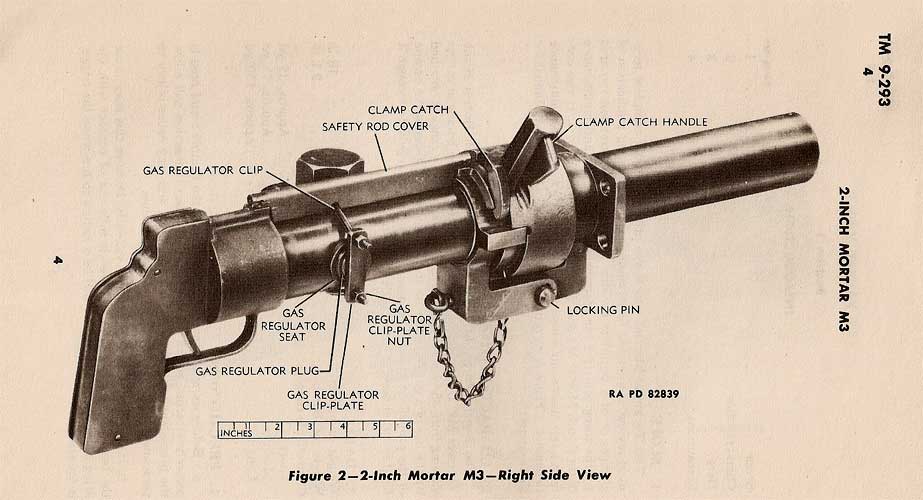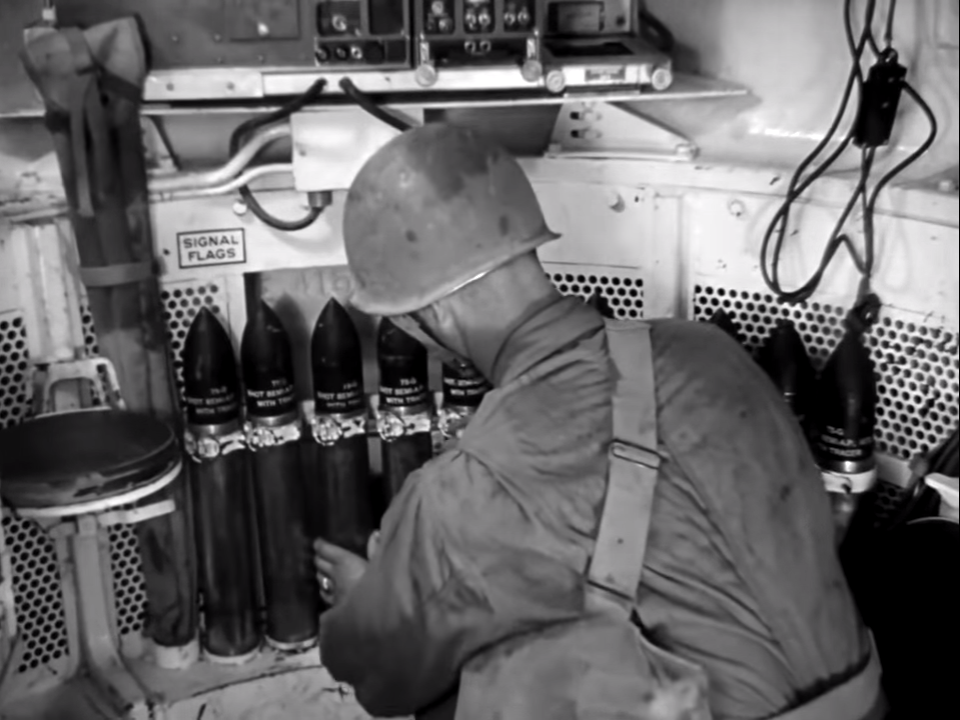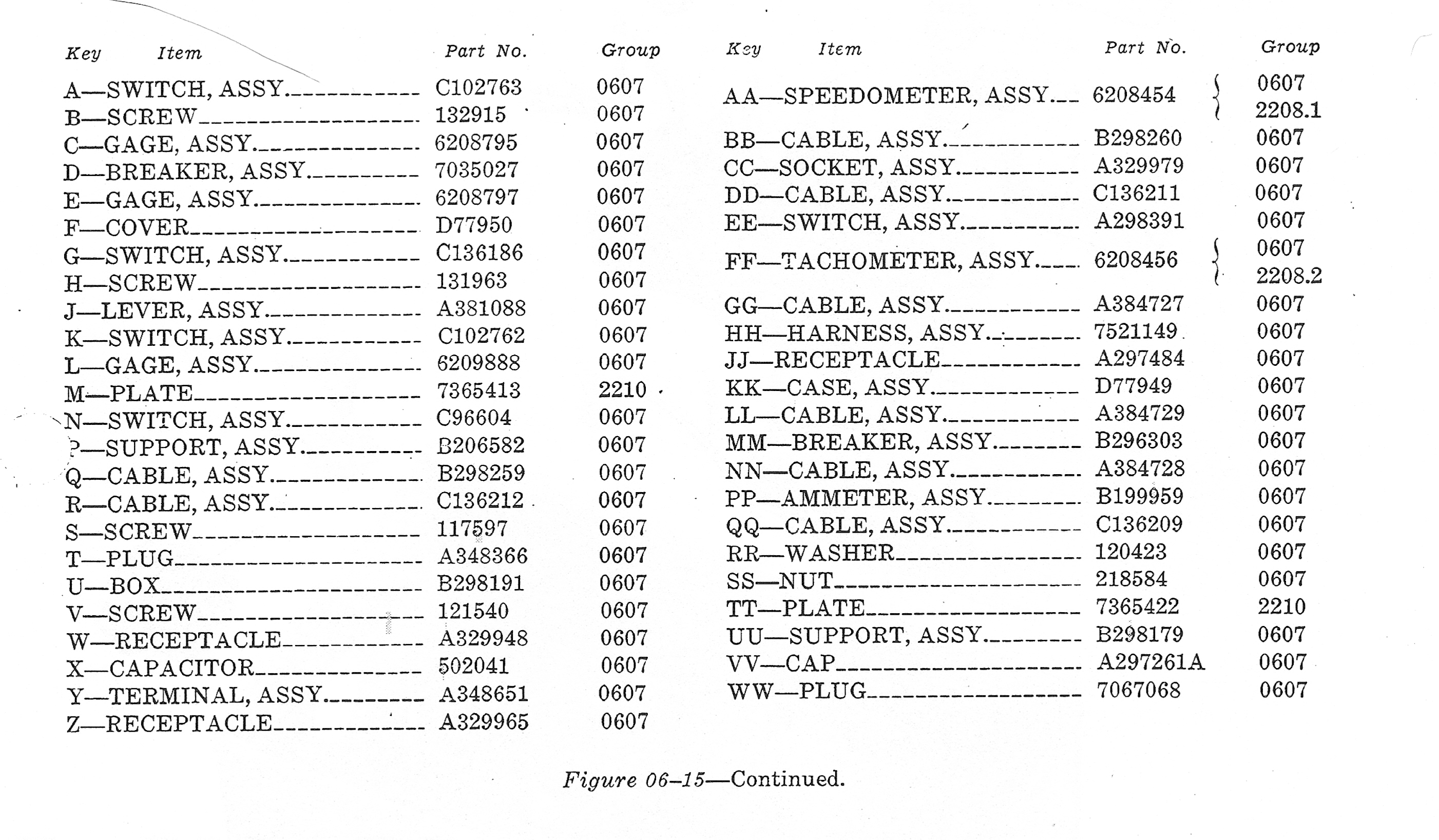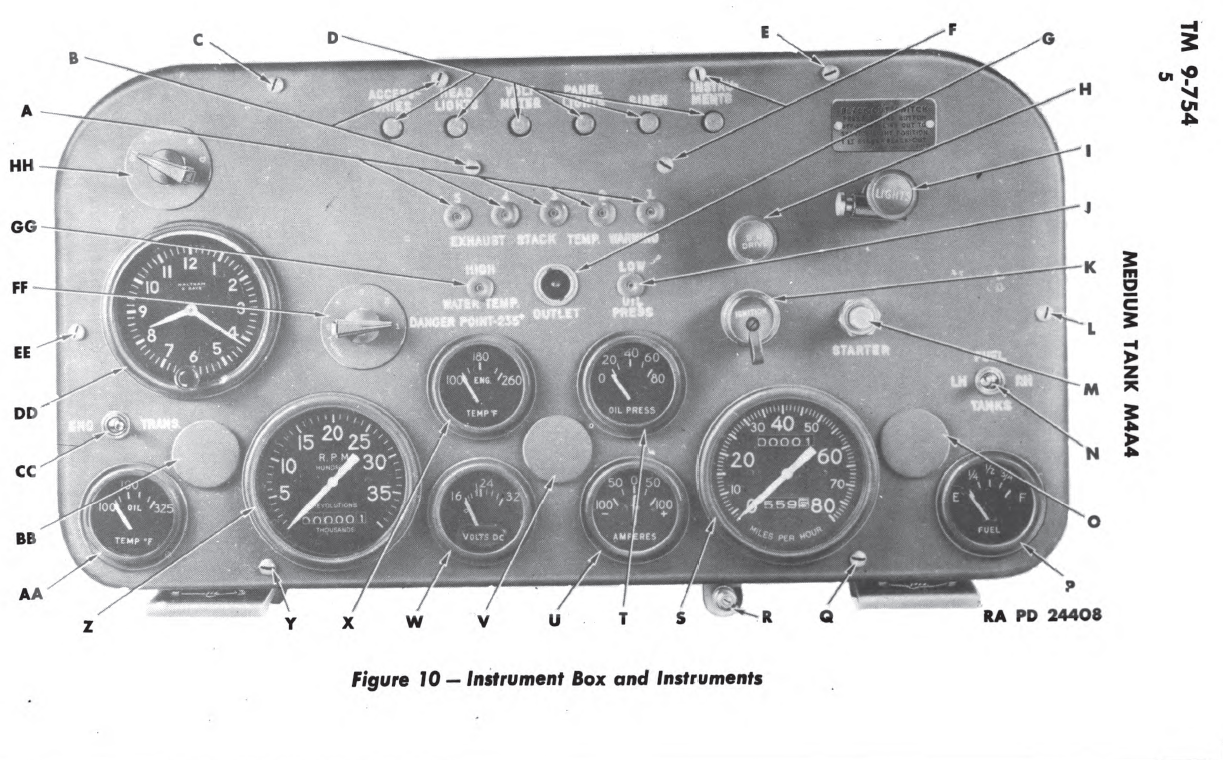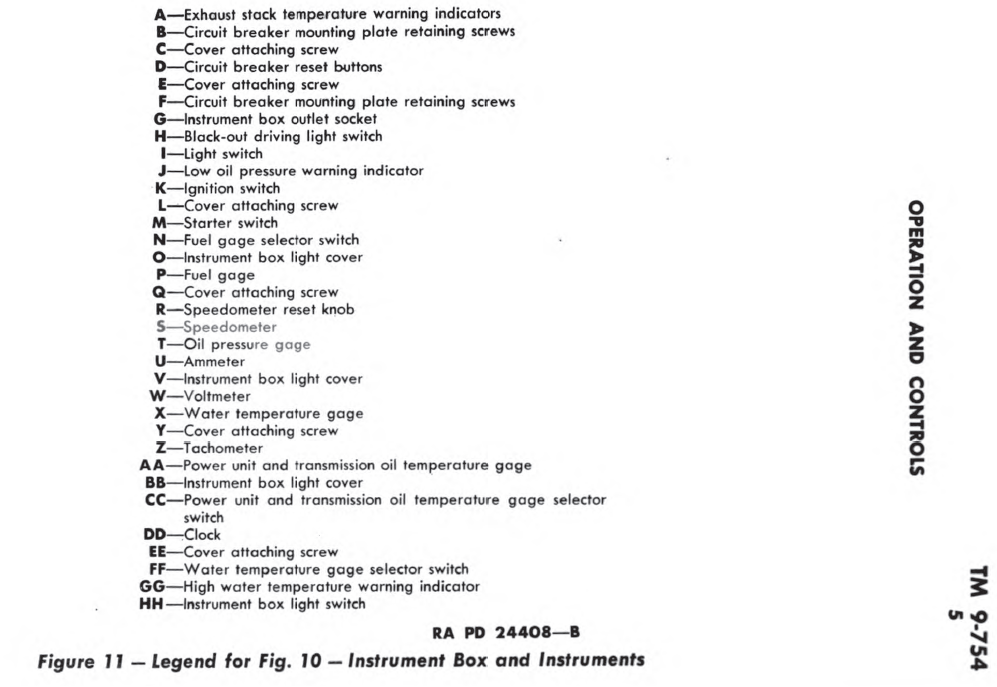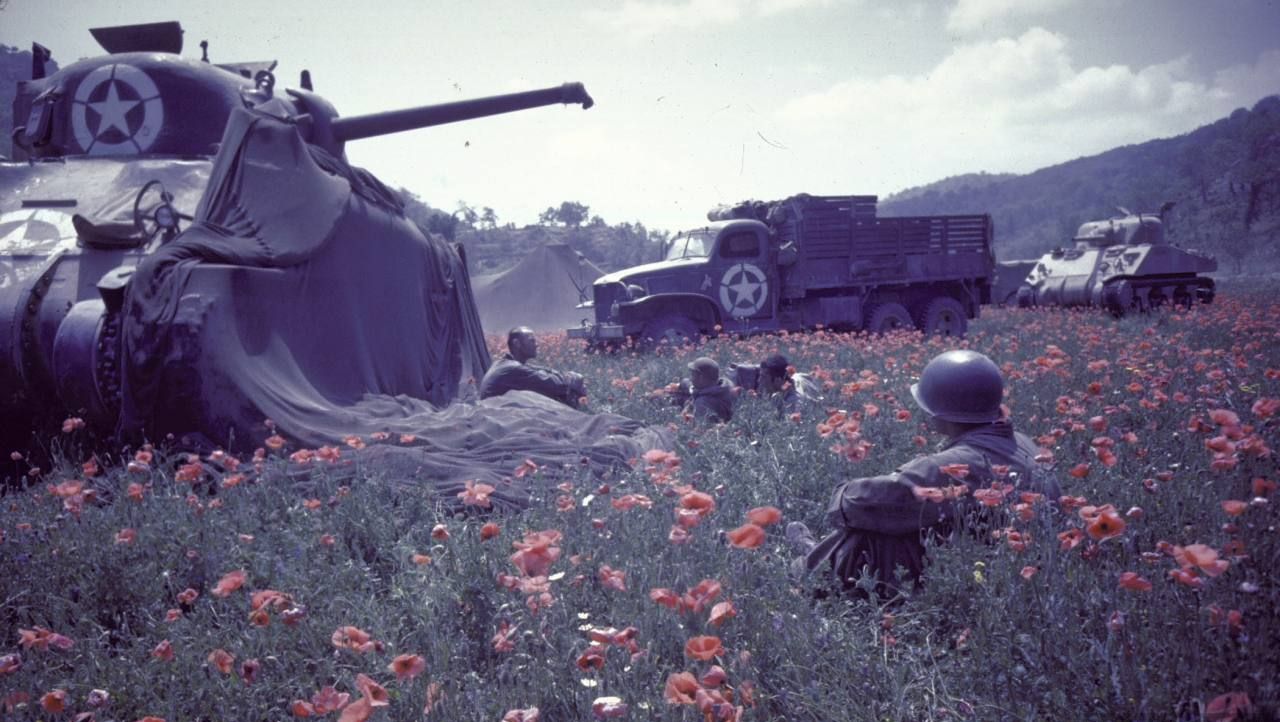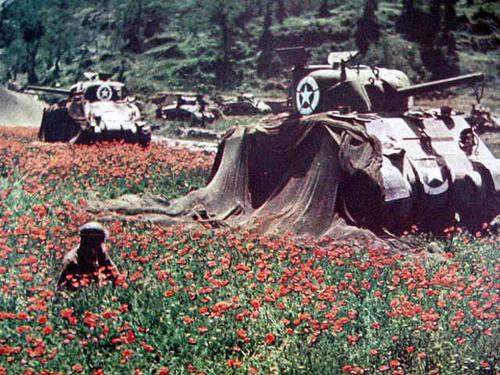The Life of a Sherman Tanker: The Crew the Tank, and How They Lived With it, Babied it, Loved and Hated it.
This section is about the crews and their life in the Sherman tank. It will cover the responsibilities of each crew member. It will try and cover the day-to-day routine of a tank crewmember. No man facing war in the modern world has it easy, and the men who fought the Sherman fit this category, but the claims of bad writers aside, the crews of Sherman tanks had a better chance to make it through the war than your average dough. Tankers faced dangers regular infantry didn’t, but overall, being a tanker was more comfortable, safe, and less likely to get you killed than being a grunt. No man who had to face down Nazi Germany, or Imperial Japan, had it easy.

In most cases the crews loved their tank, this point was really driven home in a recent Chieftain’s hatch, he mentioned how he was interviewing an American tank crewman from WWII, and the crewmember loved the Sherman because it protected him from all the stuff he saw kill the infantry around his tank. When any kind of artillery fire comes in, the tankers can just close their hatches, buttoning the tank up, and wait it out. The exterior cargo on the tank is going to get some holes but the crew was safe, and even a direct hit, unless it was a really big gun, probably wouldn’t hurt the crew. The doughs around the tank had to find any cover they could, and lots of infantry died to mortar and artillery fire. The tankers also didn’t have to worry about machine guns, AP mines, grenades, and bayonets either.
Being a tanker has its own set of dangers and horrible ways to die, but overall, it was a lot safer to be in a tank, than to be any kind of grunt. Sure, the beast you live with, service, and fight can hurt or kill you if you are not careful, ripping off a carelessly placed foot as a turret rotates or losing fingers to hatches can suck, but training can minimize those, no training can save you from an artillery barrage as grunt if you didn’t have time to dig a hole and it’s flat. The gruesome ways tankers could die in combat are somewhat offset by the things he can stash in the tank to make life more comfortable. Booze and non-army food were popular items for tanks, plus, you’re not walking around with a heavy pack all the time.
Drills: Monotonous Training, because ‘Second Nature’ means it’s easier to do under fire!
Along with the Technical Manuals that the crew received on the radios, guns, tracks and suspension, and more, there were Field Manuals that the crew used to drill on the tank. The main one for the M4 gun tanks was FM17-67 Crew Drill and Service of the Piece, Medium Tank M4. This was a 132-page book that contained instructions on the crew composition, and on foot formations, crew control, drills, serving of the piece, mounted action, dismounted action, removing wounded from the tank, inspections, sight adjustments, and destruction of the tank and its components. Training means practicing these things over and over.
The idea behind the Field Manual was to give the tank commanders and platoon leaders a set of standard instructions to teach their men so they were all trained to do their jobs the same way, to make everything about the tank and using it as familiar as possible, so it could be used in combat effectively, even under the most terrifying conditions, and still accomplish its mission. The commands being standardized meant the crew members could be moved around and know the standard way things are done, even in another tank, with an unfamiliar crew.
Now let’s talk about what drilling is all about, because unless you’ve been in the military (I haven’t been, but you can learn about this stuff without having served, and that’s the idea here), you may not really know what drilling means, and it doesn’t involve power tools. Sportspeople will have some idea, drilling on something is doing it so often, exactly the same each time, hundreds of times or more, to make the drill second nature. So when a tank commander yells abandon tank, no one thinks about it, they just do it, and they’ve done it so many times, they do it flawlessly and fast because they practiced over and over knowing their lives could depend on it later.
Here’s a list of some of the drills: Do Something Over and Over until it bores you to Tears
Each of the drills would be called out by the commander as a verbal order, and each crew member including the commander would carry out a series of actions to accomplish the order. For example, Drill/Order Dismount would be called out, each crew member would have specific instructions for what they were expected to do. Starting with disconnecting their headset intercom cable, then standing on the seat and climbing out, the open hatches order would already have been given.
Prepare to mount the Medium tank; Mount/Dismount: The order/drill for getting in or out of the tank.
Close all doors/hatches open Doors/hatches: The order/drill for Opening or close the hatches on the tank.
Prepare to dismount through escape hatch; Dismount: The order/drill for the whole crew prepares to leave the tank through the belly escape hatch.
Pep Drill: A drill, made by making a series of drills into a command to be carried out. for example, Commander orders; IN FRONT OF YOUR TANKS, FALL IN; MOUNT; DISMOUNT; FALLOUT SERGEANT; ON THE LEFT OF YOUR TANKS, FALL IN; FORWARD, MARCH; TO THE REAR, MARCH; MOUNT.
Prepare to fire; Various Fire orders: The orders for shooting the guns at various things, including the main gun AA gun and CO-AX.
Secure Guns: This was all the actions taken to secure the guns, including unloading them and lowering the periscopes.
Restow Ammo: This order/drill was for re-stowing the hard to reach ammo so the loader could reach it better by restocking the ready racks and racks nearest him that were depleted by firing.
Load Ammunition: This is the command/drill for loading the tank up with fresh ammo through the hatches. Main Ammo came in 2, and 3 round crates or tubes, so the crew would have to unpack it all then load it into the tank.
Prepare to fight on Foot; Dismount: This is the order/drill for the crew to get their personal weapons ready, and prepare to exit the tank and fight on foot.
Out of Action: This is the order/drill to get back in the tank after fighting on foot.
Engine Fire: This is the order/drill for what to do when the tank’s engine is on fire.
Air Horn Fire: This one is similar to the one above, but for a specific type of fire that only happened on the tanks powered by the R975.
Perform halt inspection: This is the drill/order for doing all the inspections involved with maintaining the tank on a road march.
This list is just a sample, there are many more in the crew drill manuals, and the drills vary a little depending on the vehicle. There were a series of drills specific to the various models of Sherman I didn’t list along with numerous inspections related and maintenance related drills too. If there was a common action or job to do on a Sherman tank, there was a Drill involving it. Once in a combat theater drilling would be a lot less common, unless they were refitting and training a lot of replacements or in a rear area for a long period of time.
Inspections drills involved inspecting parts for wear and tear, and were not the same type of inspection officers would carry out to makes sure all men and gear were present and working. There would be those as well, but they are not really a drill.
Another responsibility of the crew that was covered in FM17-67 is destroying the tank if it is disabled in an area likely to fall into enemy hands. If they had a good chance of escaping capture, they were to take the periscopic and telescopic sights, if not they were to be smashed. Then basically, what was destroyed was based on what you had the most time to do. If you had very little time to get away, you might only disable the main gun, machine guns, and stabilizer, with more time the gun recoil mechanism and or the whole tank. The manual gives instruction on methods to destroy everything from the machine guns and main gun to the tank itself. The Army has refined this over the years, and now the tanks have charges just for destroying them as part of the tanks gear.
Now let’s go over each man of a Sherman crew and the things he was responsible for and what his job involved.
Commanders position: The Boss, the Man in Charge, the Big Cheese
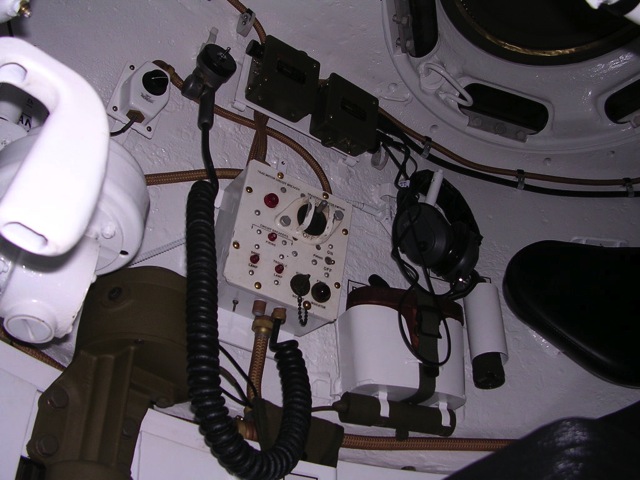
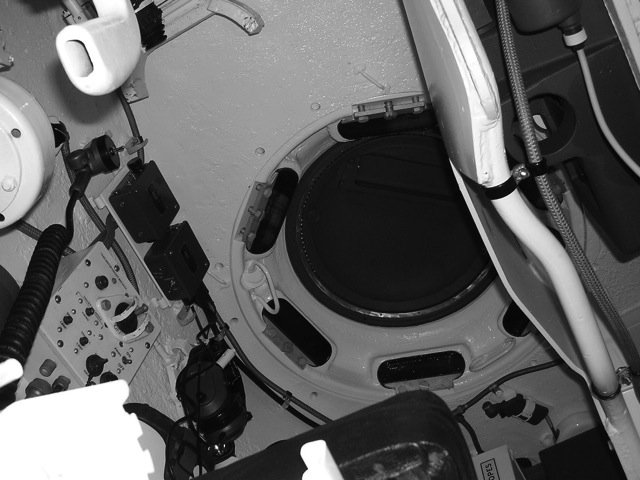
The commander sat in the back right side of the turret directly behind the gunner. His job was to command the tank. This meant he took the orders from the platoon leader or company commander and made his tank perform the tasks he’d been given to accomplish the missions he was on. He had the radio in the bustle of the turret to his rear to help him communicate with the rest of the tanks in his unit. To do this he could stand on his seat with his head and shoulders out of the tank, and direct the crew over the intercom. Only he could transmit on the radio, but the other members of the crew could listen. They could all talk to each other on the intercom. On early M4s, when ‘buttoned up’ or when the tank was all closed up with its hatches closed, the commander only had his rotating copula periscope. Later versions of the Sherman had an all-around vision cupola, discussed earlier, that provided a much better view around the tank for the commander. As some of the charts show in the data section, this was the most dangerous crew station. The commander spent a lot of time with his head stuck out, when the rest of the crew was buttoned up, it made him a prime target for basically anyone and anything being shot at the tank.
His job in combat was to call out directions to the driver and call out targets for the gunner. He had a sight vane mounted on the roof of the turret to use outside, by using it and his turret override; he could put the gunner roughly on target by rotating the turret. If he was the platoon leader or company commander, he would be calling out directions to the other tanks and trying to sort out what everyone was doing and keep things under control, or in the company commander’s case as much control as he could over the tanks in his company. He would be depending heavily on the platoon commanders to run their platoons and keep him informed of what was going on.
He was responsible for the tank up to a point and had to make sure the crew kept up on all the required maintenance to keep the tank in proper running order. He was also responsible for the well-being of his crew. The commander was for obvious reasons, the most experienced man in the tank in most cases, as well. Crews that had that belonged to the platoon, company, and battalion commanders were often short a man on tank maintenance since the officer would be off doing officer stuff, like planning and thinking, sometimes the tanks had a sergeant who stood in for the officer when he wasn’t using the tank as well.
The commander’s position was the only spot open to officers under normal operations. The most common officers would be 2nd lieutenants, and lieutenants as platoon leaders, captains as company commanders, and lieutenant colonels as battalion commanders. You might find a major or two in there as well. NCOs of various ranks from the lowly buck sergeant to staff sergeants and maybe higher on rare occasions would be the enlisted side of the tank commander scale. All the other positions in the tank were filled with lower ranking NCOs or PFCs.
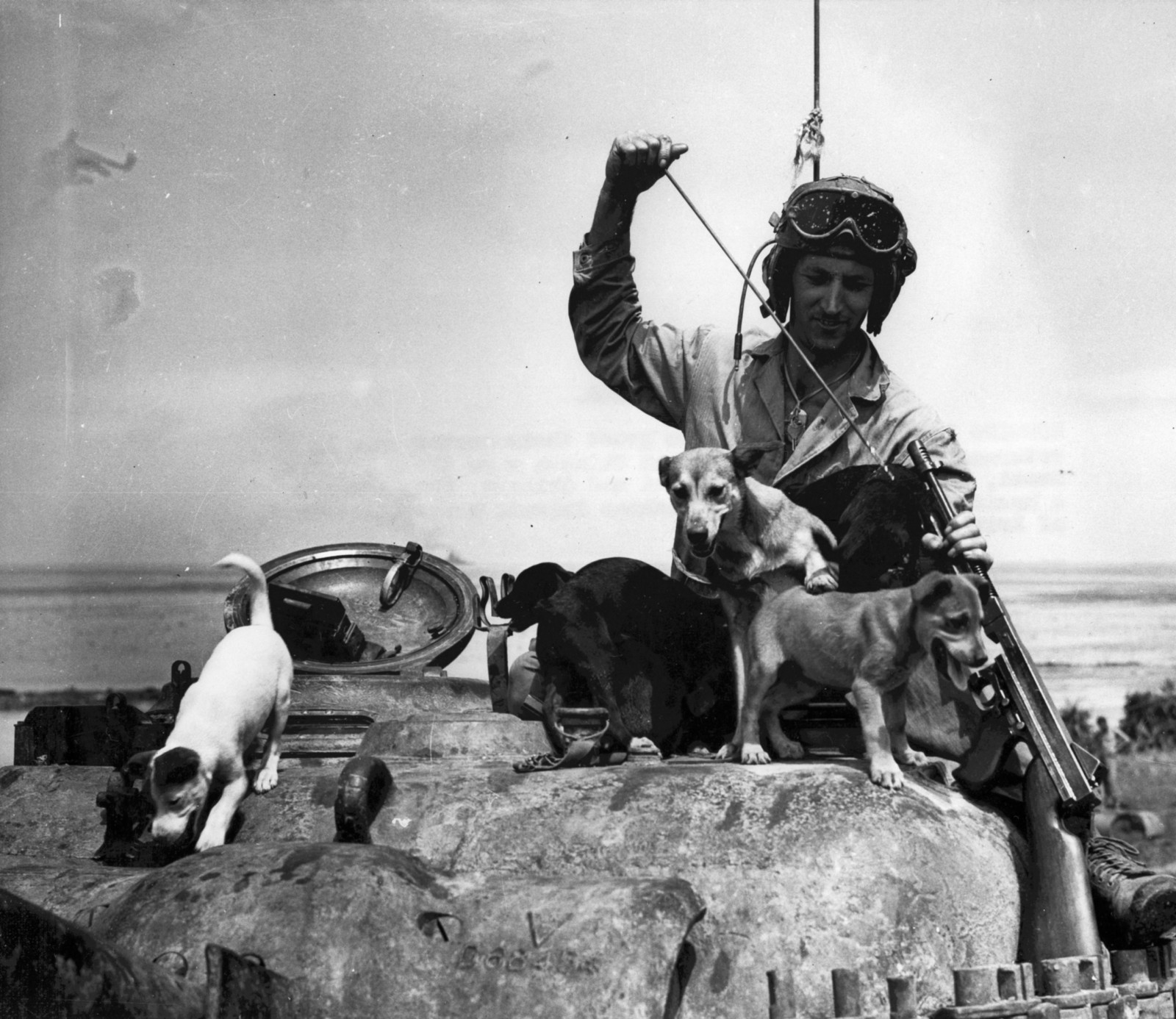
Gunner: The Man behind the gun Big Gun and the Co-Ax.
The gunner was usually the next senior man in the tank. He sat right in front of the commander and used the commander’s hatch to get in and out. He had his own set of turret controls, and only he could control the elevation of the main gun. Along with the gun controls, he had all the controls for the stabilizer in front of him. In early Shermans, he only had a periscope with a reticle, it had a fixed 6x power zoom, but also could be looked through with no zoom. Later gunners had the periscopes and a direct view scope. He was dependent on the commander to get him near a target and then took five to six seconds for him to pick up the target. This took a much longer time on German tanks like the Panther, with gunner target acquisition times in the minutes, not seconds.
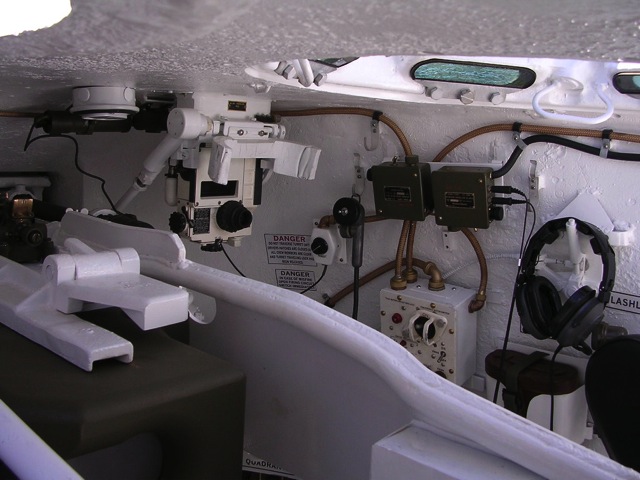

The gunner controlled the main gun, and the coaxial mounted M1919A4.30 caliber machine gun, though he was still following the commander’s orders on what to shoot. Each weapon was fired with a footswitch on the gunner’s footrest, and a manual lanyard for backup use. The gunner controlled the turret either with a hydraulic system independent of the tank’s motor, and a manual system that just used a crank and gears. You would think the gunner would have the best view out, but in tanks, most of the time, at least in the older models, their view was very limited, but for the era, the Sherman was better than most other tanks. A good gunner working with a good loader in the 75mm armed Sherman could get off, two or three aimed shots in a very short time, a very big advantage in tank combat.

A Tank gunner also had to be able to shoot, like all other WWII tanks, the Sherman lacked any kind of aiming aid for the gunner other than his scope and periscope. Limited range finding could be done with the reticle in the sight, based on the known height of something, but it was not very exact. The gunner’s brain was really the tool that did the correcting based on experience, skill, and innate ability and feedback from the commander on fall. Modern tankers have it much easier in this area, since modern tanks have laser rangefinders, and sensors to check for windage, temperature, and barrel wear, and a computer to use all the data to compute the aiming corrections for the gun. That was something that probably couldn’t even be dreamed of by a WWII tanker. Better rangefinders were right over the horizon though.

Loader: The Man Who Feeds the Hungry Beast!
The loader’s job was to service the 75mm M3 gun and the coax .30 caliber machine gun. The commander or gunner would call out the ammo type for the main gun, and the loader would load the gun and yell “Up!” and the gunner would know the gun was ready to fire. The loader was supposed to watch the belt on the coax and make sure the gun didn’t run dry. He was also supposed to be trained on how to clear a problem with the main gun or machine guns. Even canons can have duds, or shell problems, or even just break. There were a small number of spare parts kept in the tank for the common things that failed on the guns.

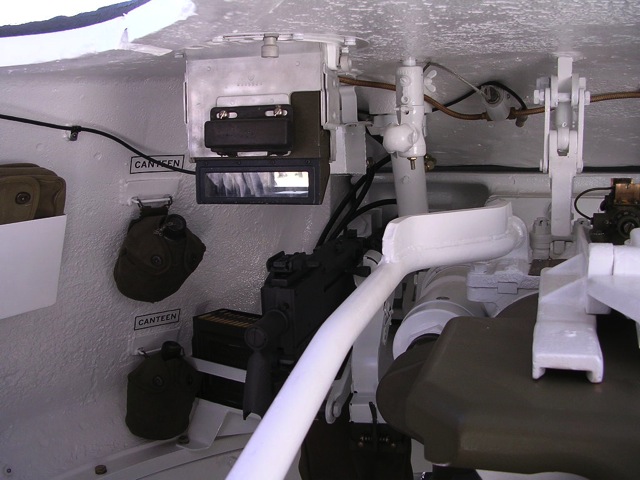

The loaders station was on the left of the gun, opposite of the gunner. He had a lot of space to move around compared to other tanks of the time, and a fold-up seat. He also had a fully rotating periscope on the roof above him for his viewing pleasure. In early Shermans, the loader had twelve ready rounds around the base of the turret basket, with another eight in a ready rack at his feet. This was the primary reason so many early Shermans burned, anything that penetrated the turret or the hull and hit those exposed rounds would set off a chain reaction of the propellant in all the ready rounds igniting, destroying the tank, and often killing most of the crew. This problem was figured out pretty fast and the twelve exposed rounds were deleted and an armored four-round ready rack replaced it and an eight-round ready rack was used on improved models. Later armor was added to the inside and outside of the sponson ammo boxes as well, before removing them completely for the wet ammo installations in later improved hulls floor.
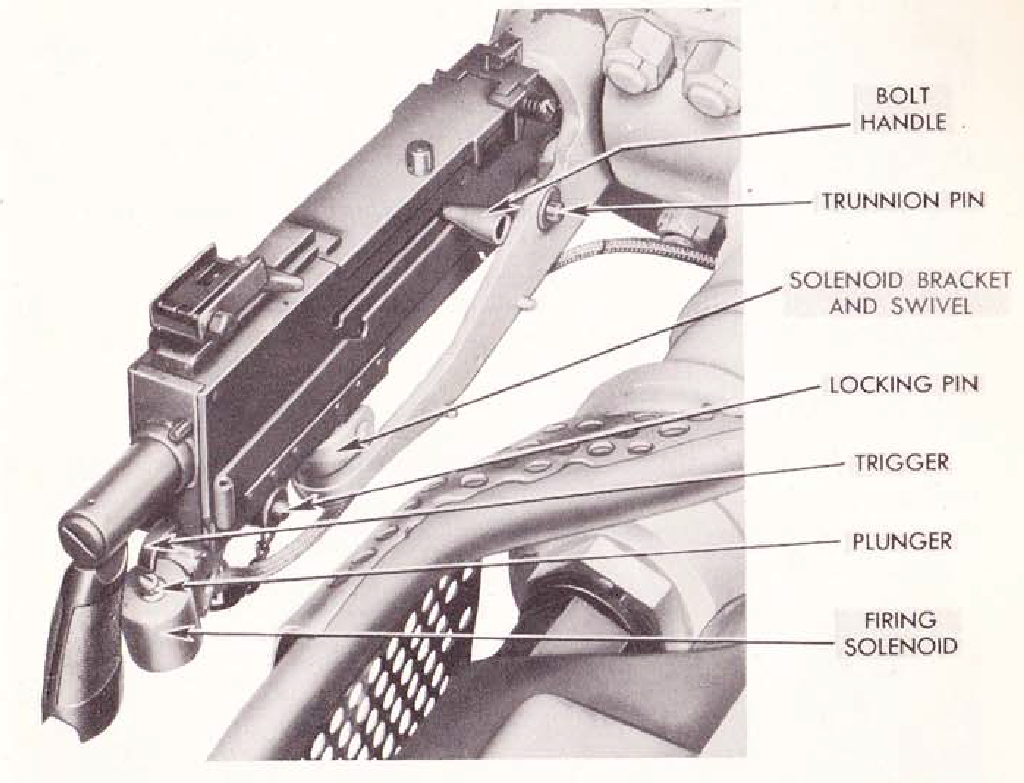
If a lot of firing was taking place, the loader was a very busy guy, on early Shermans the sponson racks, even without all the turret ready ammo, he had a fair number of easy to get to ammo racks for the main gun, but since the turret basket was screened, he could only get to them with the turret at certain bearings. With the switch to all ammo but the ready ammo in the floor of the hull, his job got much harder. On the wet ammo rack tanks, he would have to pull open doors in the bottom of the turret basket, then open an armored box and pull ammo from it. He had to know what was in all the ammo boxes, and was responsible for what got loaded into where, and remembering it all.
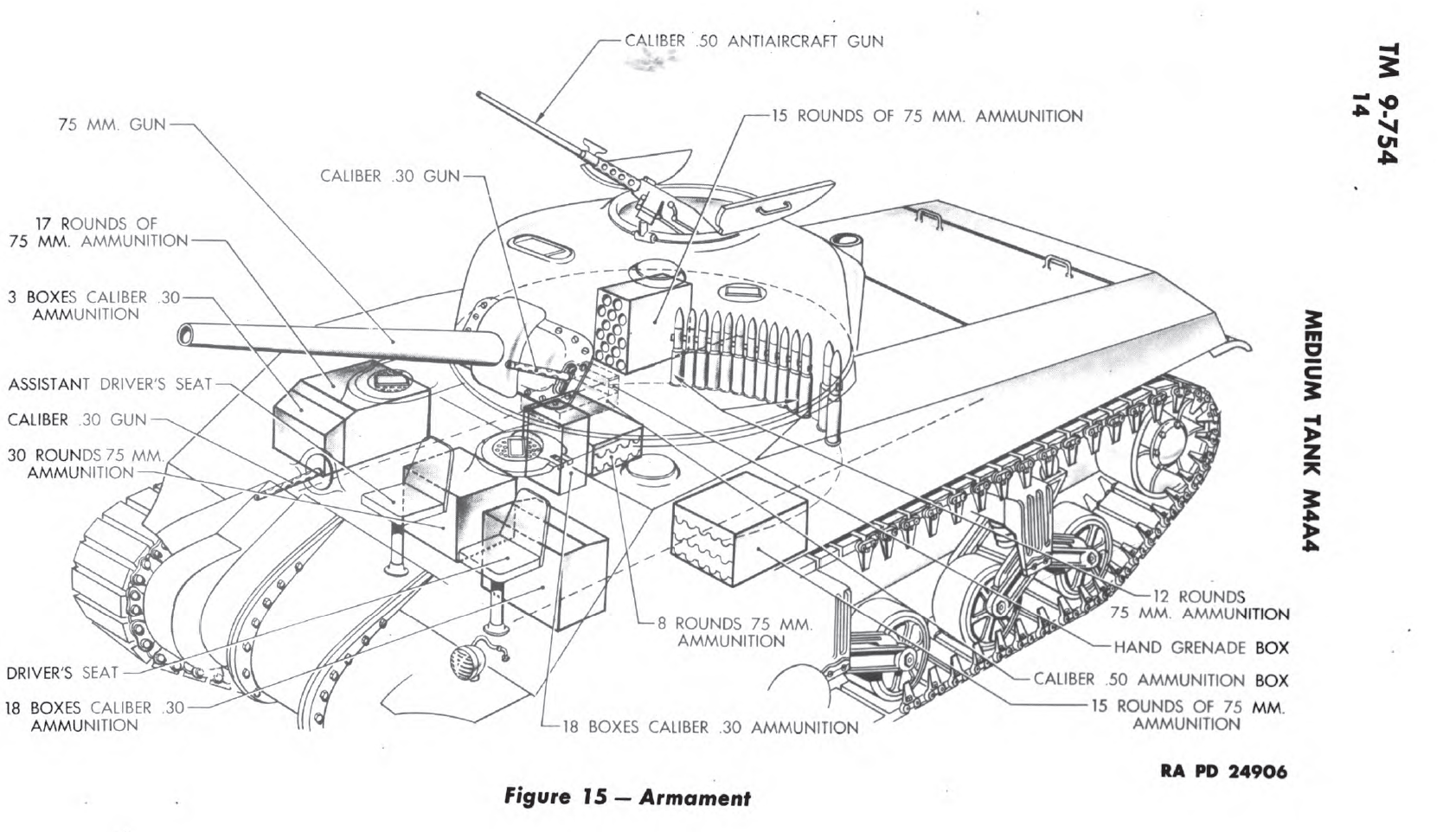
The loader on some models also had a 2-inch smoke mortar to load and fire at the commander’s desire. It was a short-lived feature. It protruded into the loader space and was not well-liked by that member of the crew. Part of the crew drills for the Sherman involved almost the whole crew, during combat, if the tank wasn’t moving, the co-driver and driver helped the loader by handing him ammo from harder to reach ammo racks near them, and in lulls, in the fighting, the whole crew would help, so the loader could re-arrange the ammo racks getting hard to reach ammo into the easier to reach racks.
After spending some time as a co-driver, a crewmember may be moved up to loader. A good loader was important, the 75mm and later 76mm guns were capable of very fast rates of fire, but only if the loader could keep up. When he wasn’t scrambling around the floor of the turret opening armored doors in the floor to find ammo to feed the gun, he was another set of eyes. On early tanks using his periscope, on later ones he could stick his head out of his own hatch. Many crews mounted extra machine guns to the roofs too, and if there was one on the loaders hatch it would be his to shoot. Some units would put the M2 .50 mount in front of the loader, and put a .30 Cal M1919A4 on a mount in front of the commander.
Early to well into later production 75mm gun, armed Shermans did not have a loaders hatch. This meant if the loader had to bail out of the turret through the commander’s hatch, he had to get around the main gun to do it. It would be a very hard thing to do if the tank was burning or the loader was wounded and the tank filled with smoke, but that’s why they drilled so much.
The Driver: The Man Who Drives But At the Behest of the Boss
The driver and co-driver were separate from the turret crew; they sat in the forward part of the hull. They could only climb into the turret if the turret was rotated to line up the holes in the turret basket, at least on early models, with the driver’s compartment. The transmission sat between the driver and co-driver and only the driver had a set of controls. Only the driver had any instruments as well. On early tanks, the drivers and co-drivers hatches were oval-shaped and small and required the man to twist sideways to get through. On very early tanks the driver had a rotating periscope in his hatch and a direct viewport with an armored cover. The viewports were removed from production and extra armor was added over them. This was done very quickly at most factories when it was found bullet splash could get through even a closed port. They were also a big ballistic weak spot in the armor.

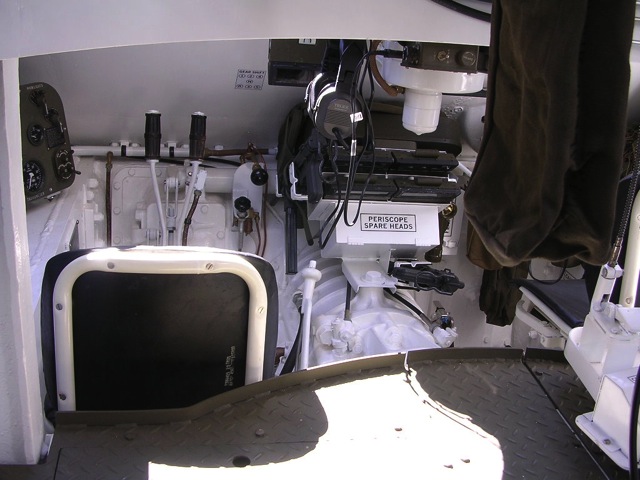
The driver needed to be able to drive the tank, often without knowing what he was driving into, trusting the eyes of the other crew members and commander to keep him out of trouble. He needed to know what his tank could drive over and climb, and what it couldn’t. Getting your tank stuck in the mud was an embarrassing thing to do. If the tank was really stuck, it might require more than one tank to pull it out, if the resources in your platoon couldn’t do it, you had to call in other help. The crew would get a lot of heat for that type of thing.

Driving the tank was important, and the driver had to work well with the commander. A savvy co-driver could be moved into this spot, or a good loader would be given a shot. The position was roomy and fairly comfortable as tank positions go. He had a good view forward from a fixed periscope and rotating one built into the driver’s hatch. The seat could also be adjusted up, and the tank driven with the driver’s head stuck out. In the movie Tank with James Garner, you get a lot of shots of him driving the tank with his head stuck out a small hatch M4A3.

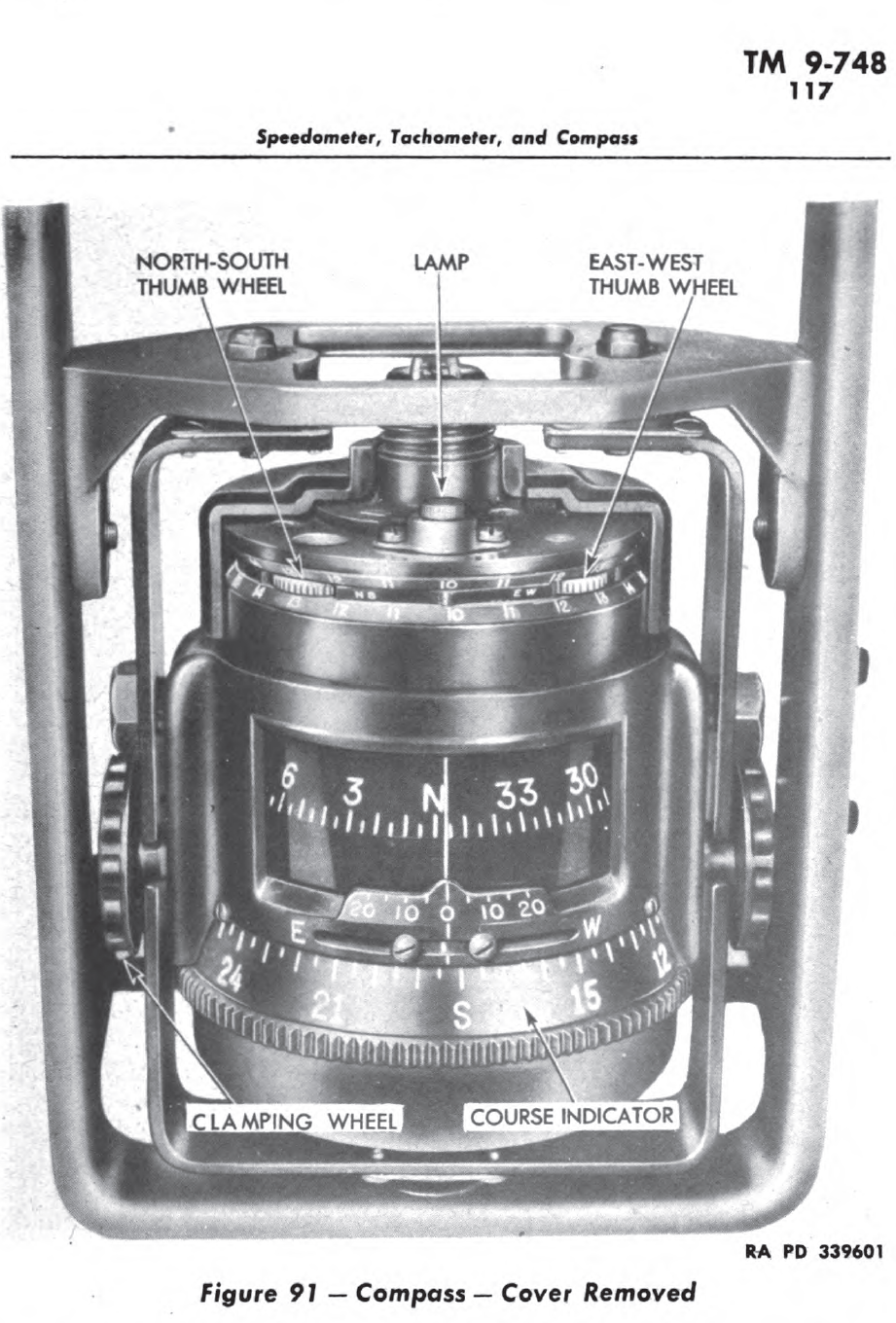
As tanks go the Sherman was reputed to be pretty easy to drive, the R975 powered models the hardest, the GAA the easiest, with the diesel and A57 powered models being almost as good as the GAA when in fine working order. Learning to drive the Sherman was the easy part, where and how to drive it in combat and just over what terrain it could go that was the real challenge. The Sherman tank’s mechanical toughness made it easier for the driver to worry about the important parts of t his job and not breaking the tank.
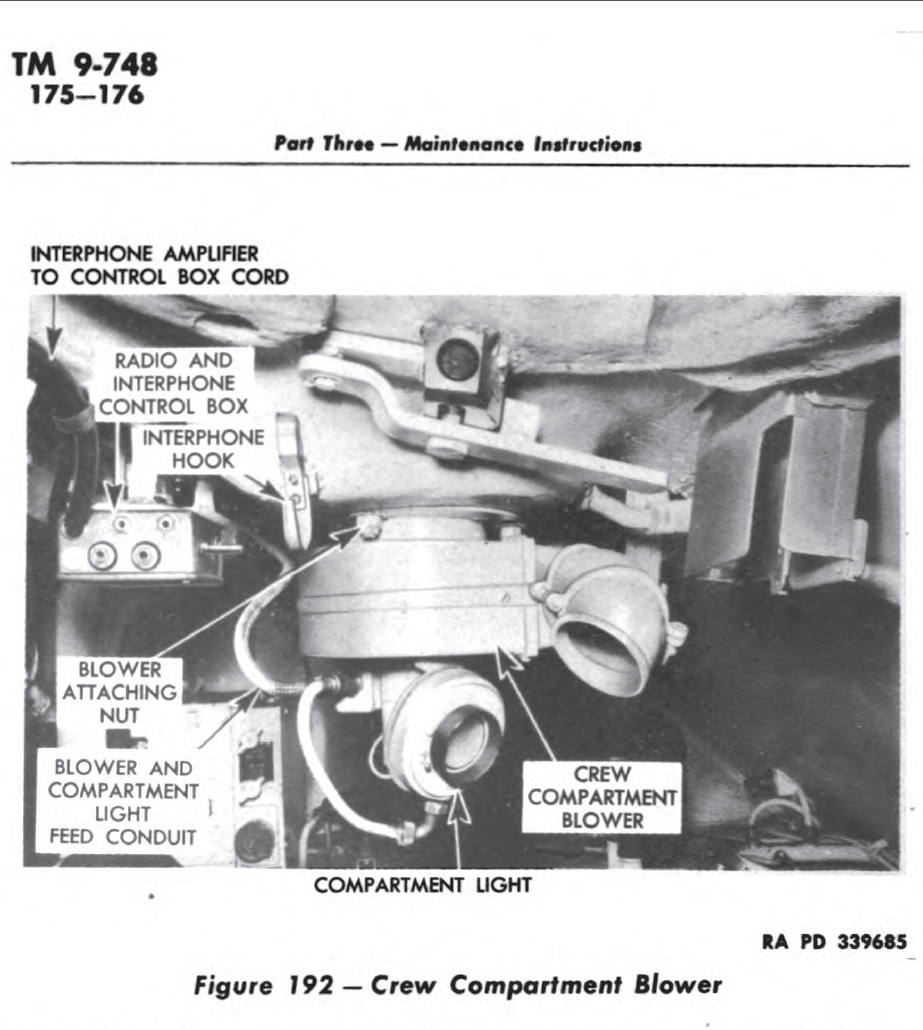
The Co-driver: The BOG, the Low Man On The Pole
The co-drivers position was on the right front of the hull and has its own hatch. The position had no controls or instrument panel. This position had a .30 caliber M1919A4 machine gun, aimed by tracer through the periscopes. This gun had a very limited fire arc and wasn’t very effective, but the extra crew member was nice to have around to help keep the tank up and running.
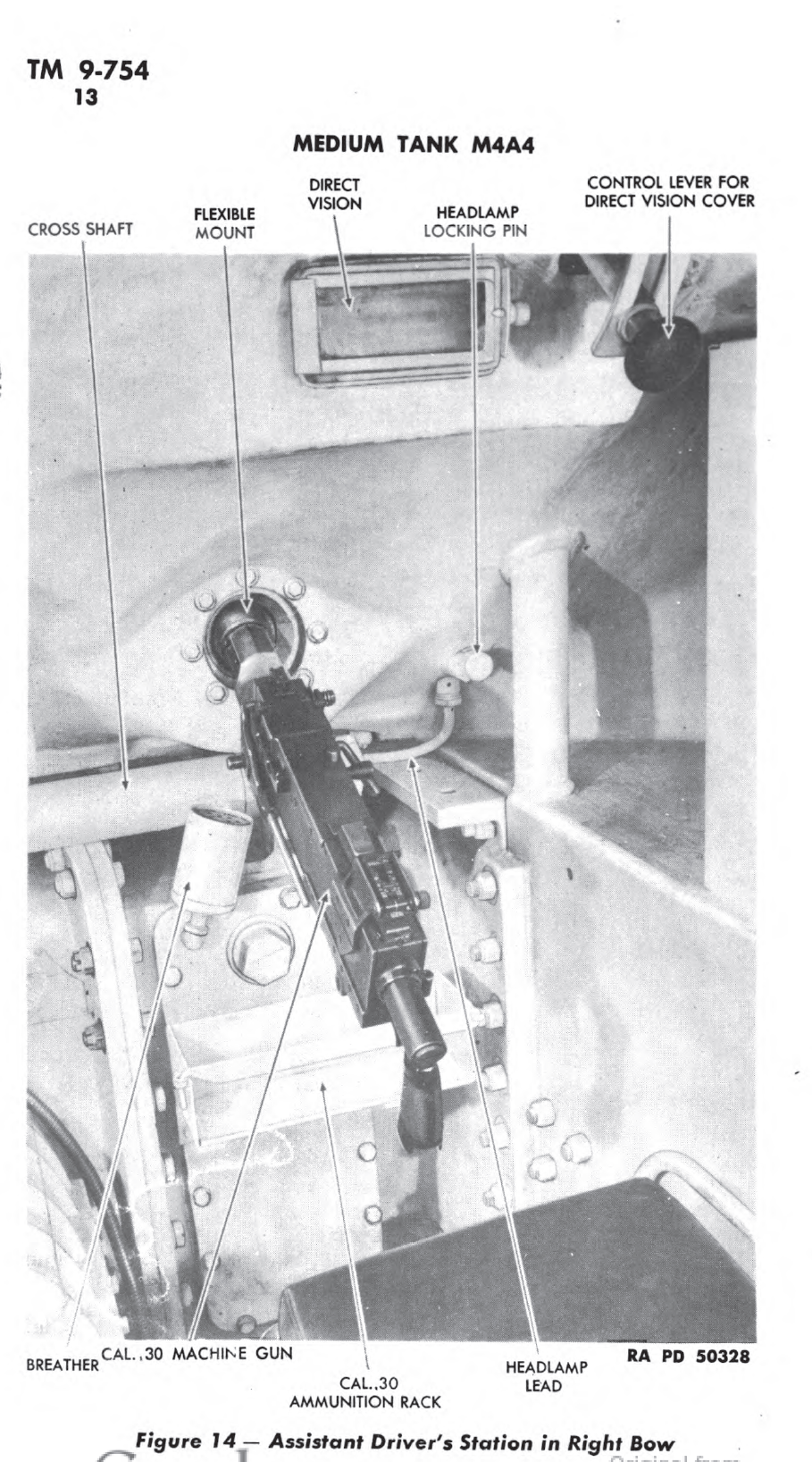
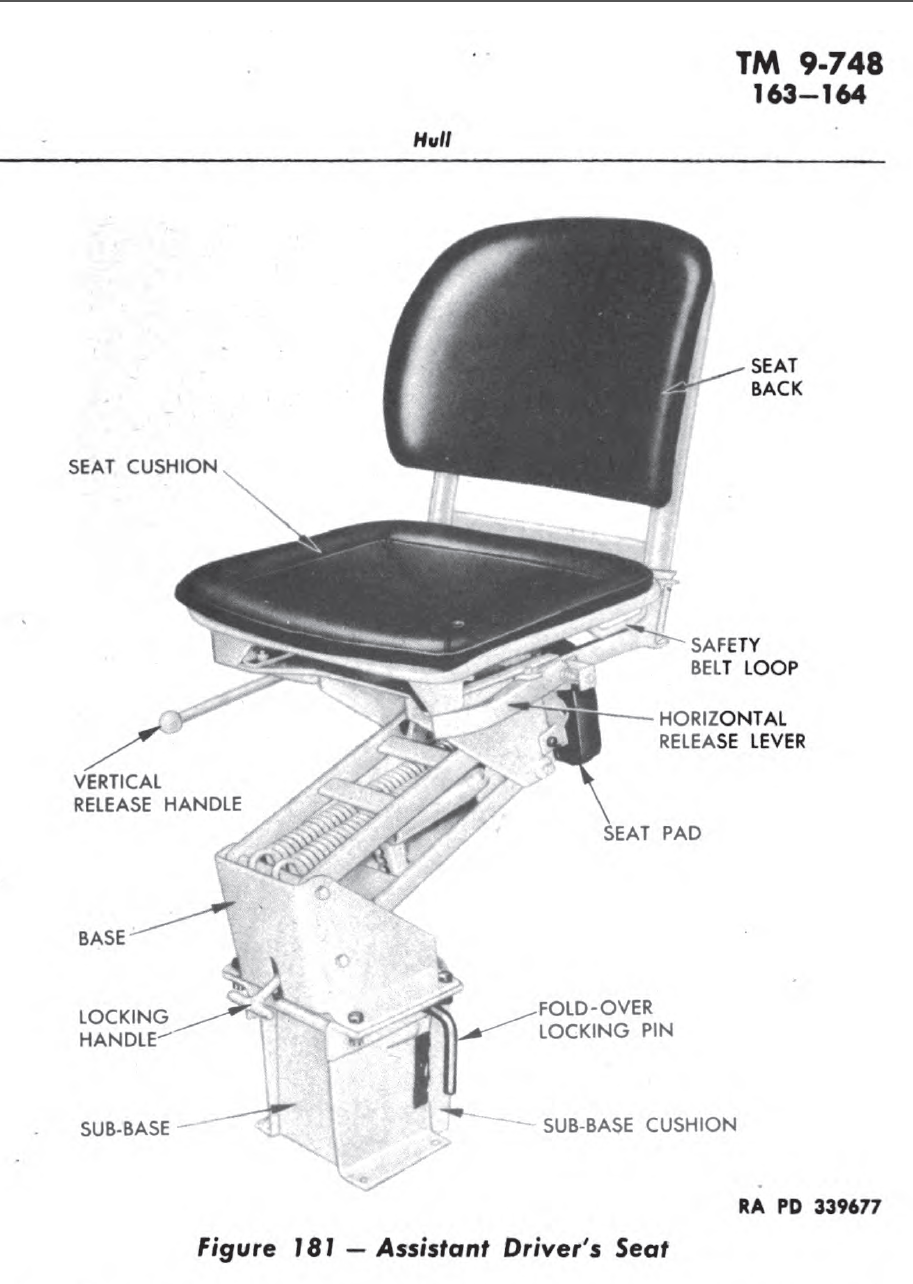
This was the position most new tankers started in. As they learned how the tank worked they got moved around. Not all crew changes were due to losses. You could have a man transfer out or be sent to the rear for a disciplinary situation, to leave, or some other reason. Crew members could be moved from tank to tank. If another Sherman lost its commander and no one in it was ready to replace the man, a really good gunner or driver might get pulled out of another tank to take it over. Crews were kept together for as long as practical. The co-driver was the closest to the escape hatch built into the floor of the tank; it was right behind the seat and would be the best way for the driver and co-driver to get out of the tank in some cases, or the only way if the turret was in the wrong place.
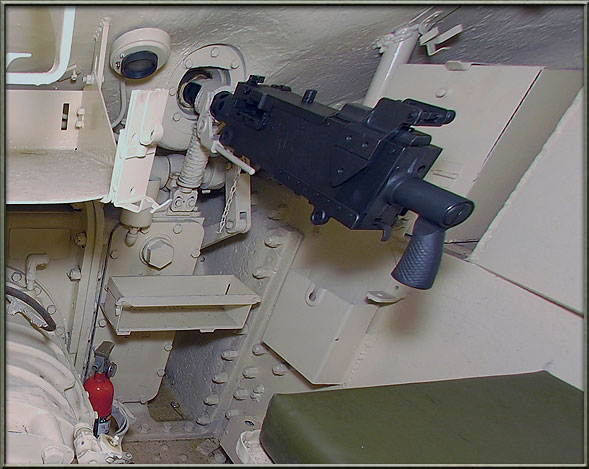
The BOG would be ready to help the loader re-store ammo when needed in combat or would be the crew member the commander asked to get out and check something. On command tanks, he would have an extra command radio mounted in the sponson next to him and he would assist the commander in its use.
Living with the Beast: In the Field, the Tank was Home
The five men of the crew were responsible for keeping the tank running. This meant keeping up on a long list of daily chores from checking track tension and adjusting it, to tightening the bolts on each end link on both sides of the track run, to checking the oil and radiator fluids, or the batteries. There were also numerous things that had to be hit with a grease gun, others that had to be adjusted. Depending on the motor type various engine maintenance tasks had to be done, and they all needed their air cleaners cleaned often. Plus cleaning and maintaining the main gun, and all the machine guns, loading ammo and fuel. The radios would require constant attention to keep working reliably. That’s just how everyone’s radios were, and US Radios were better than most.
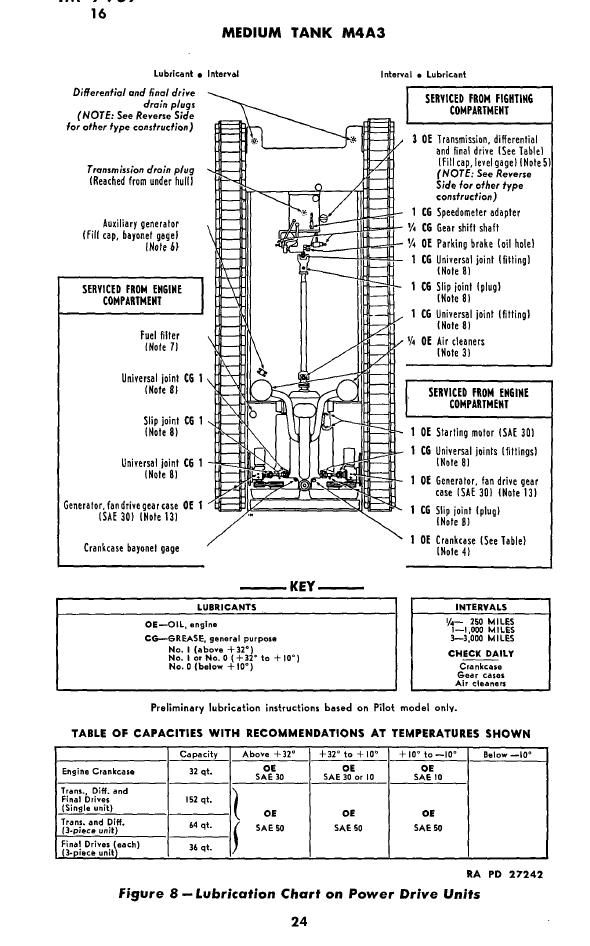
Getting food and eating, and other person chores all had to be done as well, and sometimes the crews ate while they worked on the tank. Many tanks ended up piled with extra gear to help make the tanker’s lives easier. They only had to keep the tank up to a point, if it needed major work, like a new transmission or engine; a company or battalion level maintenance crew would come and help, ideally, or a replacement tank would be issued if too much work was needed.


Daily life at a major base or rear area base in a combat theater would be similar to the infantry or the other combat arms. On a major base, they would be living in heated barracks, their tanks in a tank park somewhere, with an area set aside for maintenance. They would be living in barracks organized the same way as their units, though if in the US some men could be living off base. There would be mess halls and bathrooms with plumbing and hot water. Daily life would be drilling, cleaning and maintaining the tanks, drilling on the tanks. Practicing on the tanks, driving it around, using the weapons, fixing it when it broke, or getting it unstuck when it got stuck. Generally learning how the tank worked and how to use it, with field training and bigger exercises mixed in. There would also be a lot of cleaning, the tank, the barracks, the area around the barracks, and probably KP duty and other watches or duties. Tanker probably didn’t spend as much time running or doing calisthenics as the infantry either. One of the most common training drills would be getting in and out of the tank fast under various circumstances.

In a combat theatre rear area, life would be like a stateside base with more tents, and fewer amenities, and worse food. They would also be spending more time training on the tanks and later in the war, training with the infantry they would be working with. They would be spending their time training new people or replacements, and getting ready for their first combat or going back in combat.
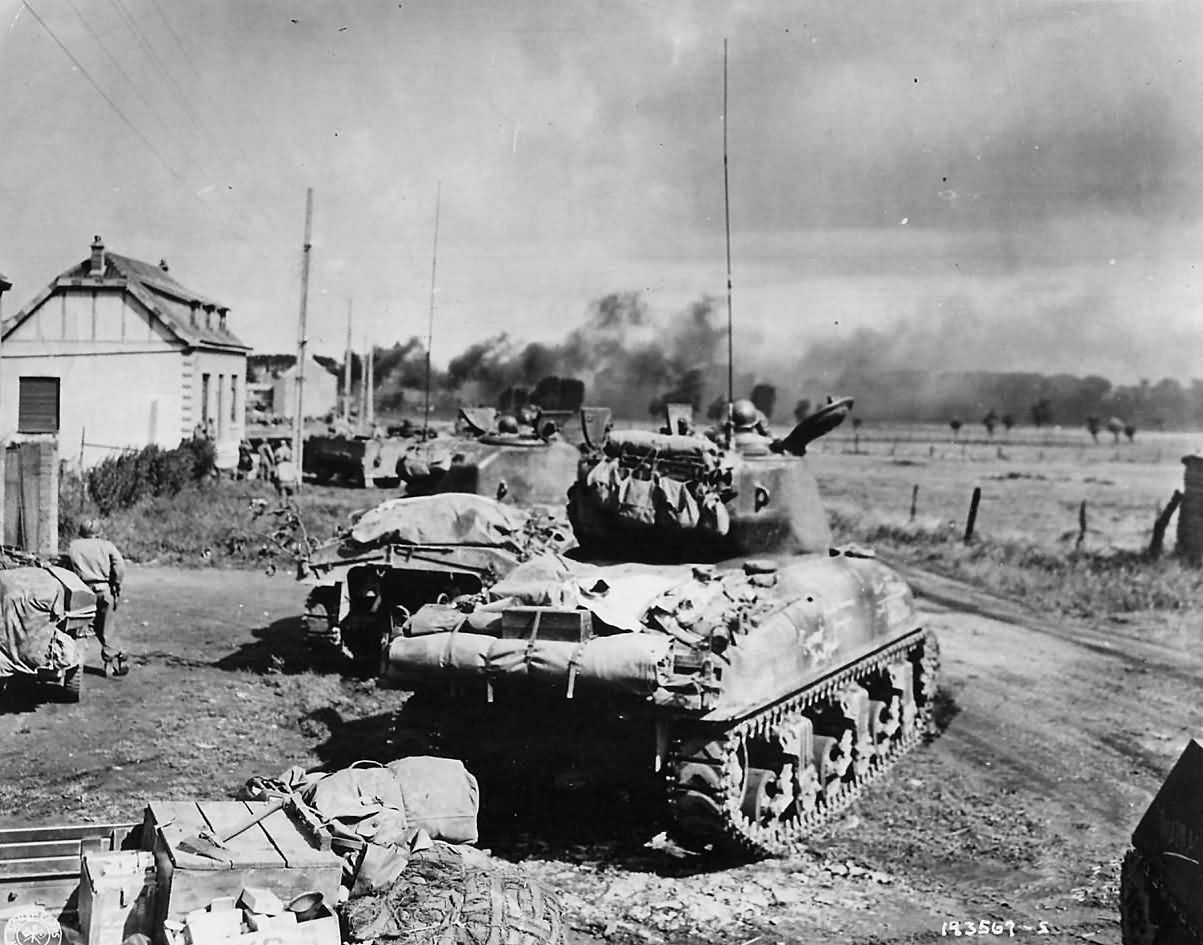
Once out operating things would be different, though much time would still be spent not fighting, working on the tanks, eating, and generally being bored. The living conditions would be worse, the men would be sleeping under tarps hung from the sides of the tanks as makeshift tents, and sleeping on the ground or another tarp on the ground or cots if they could steal them somewhere and they didn’t get shot up while fighting, since they would be tied down somewhere on the outside of the tank. Once free of the daily grind that base life was, free from junk on the bunk, or tarp in the tank inspections, tanks start to look more like something out of the movie Mad Max than tanks from a military unit. Tankers collected all manner of junk to haul on their tank, logs were common, maybe for the added stand-off armor value against AT sticks, or for the value in getting the tank unstuck from the deep mud. It was really up to the officers and senior NCOs to stay on top of the crews to keep the tanks in running condition, and it was common in badly run units for daily maintenance to stop on the tanks once the fight started.
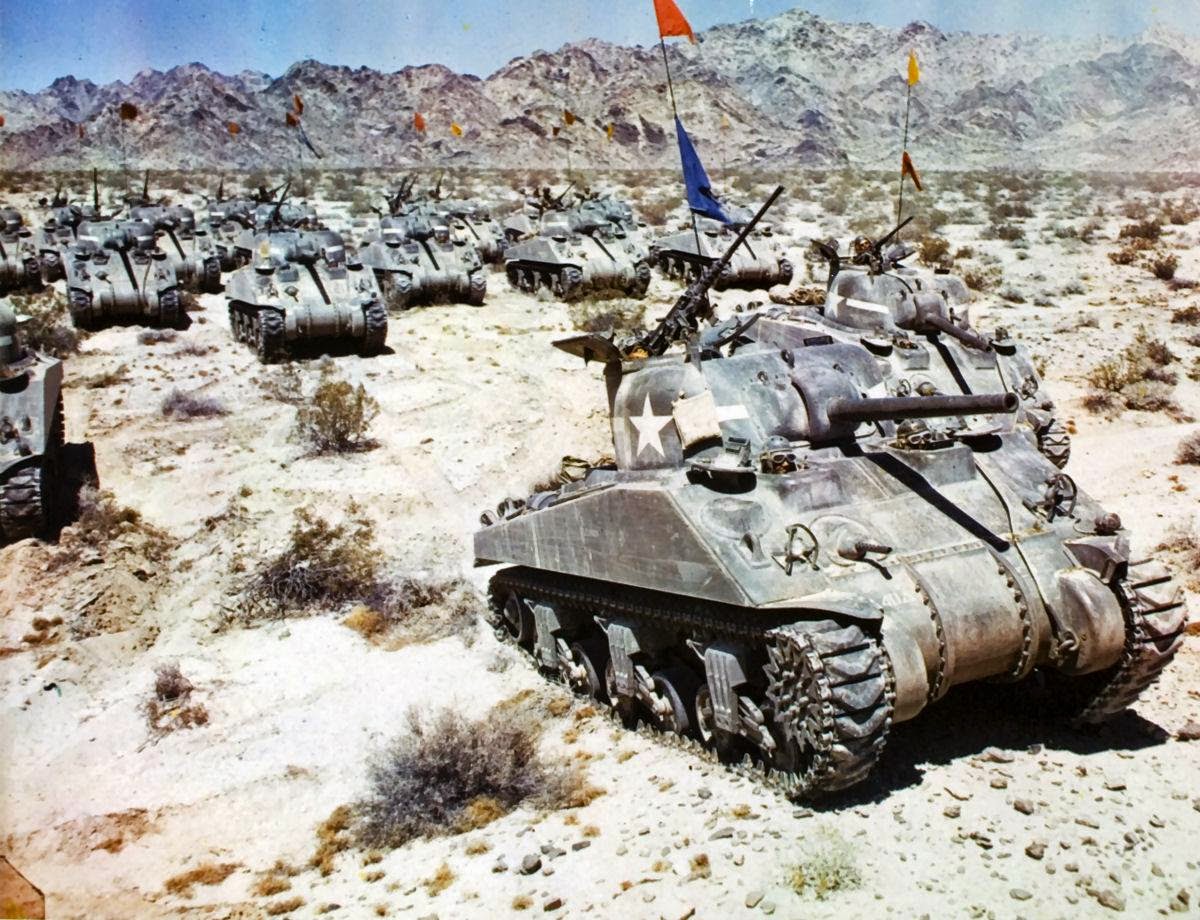
Tank crews like any other soldiers look for things to make their life easier when stuck out in the field and at war. Tankers have the advantage of being able to stuff things in the nooks and crannies of the tank, or just strap it on the outside. Things including extra food, and small arms ammo, water, gas and oil cans, stuff pilfered from abandoned homes or occupied ones once the Army made it into Germany. It’s really no surprise the US Army liberated goods from the Germans, after having to fight them and seeing what they did in the camps, it seems no one really cared as long as US Soldiers didn’t shoot the Germans while taking their things. Tankers could haul a lot more loot than an infantry grunt could. I will not judge allied troops for taking things from the Germans; the Germans did a lot of stealing themselves, and most stood by while the Gestapo shipped 12 million people off to their deaths, so having their stuff, often stolen property itself, taken by troops who didn’t want to be there in the first place doesn’t bother me. It surprises me the Allies didn’t slaughter more Germans outright after seeing their ghastly inhuman crimes though.
Another key difference is, in anything but the most desperate situation, Army or Marine Corps tanks withdrew to the rear, not far, but far enough to not be in the line, at night. Tanks are blind during the day, at night they are almost cripplingly so and tanks were rarely used in night attacks, no countries experimental night vision systems were good enough for that. Holding the line was left to the grunts, at night the tanks would spend their time getting their tanks reloaded, refueled, and repair any damage, on top of all the normal day to day maintenance a tank still required. This was done before eating, and sometimes under harassing artillery fire. In the few cases, tanks were forced to be part of a line at night and an attack happened, they often ended up alone since they had little chance of noticing their infantry was pulling back without them. This left the tanks very vulnerable to infantry close assault.
Infantry always had mixed feelings about armor. They complained about it when it drew artillery fire, and it often did. When the ground pounders ran into something really dug in, even something like a light machine gun, if their ability to maneuver to flank and take it out was hindered, they really liked tanks. If there was even a hint or rumor, of enemy armor in the area, the infantry loved the tankers and their steel mounts. A tank-infantry team, working together like a well-oiled machine, was hard to beat, as Germans and Japanese found out.
One thing the tankers were advised to do, is once an objective was taken, they needed to withdraw out of view of the enemy and off the objective so the infantry could reorganize and prepare for the standard German counter-attack. If they stayed on the objective, the amount of fire they drew, both direct, and indirect, made it harder for the infantry to reorganize, so the tanks would pull back and rearm and refuel and wait somewhere out of sight until they were needed again. If they could not get out of view completely, they would have to do maintenance, under harassing mortar or artillery fire.

I would say, just based on the fact a tanker rides in a tank everywhere they go, and that they get to carry more food and water and other things to make their lives easier. They also fight under armor, and though the inside of a tank may be hotter than hell, and smell bad, it was way safer than being an infantry soldier. Short of a direct hit from a large artillery piece, say bigger than 105mm, it would be safer to be inside a tank than in a foxhole. That they were not used to occupy areas also made their lives safer, but they have harder work to do. Working on a tank is hard, heavy, and dangerous work all on its own. But not having to walk everywhere is nice, and so is all that armor, and those cushy Sherman seats.
♦♦♦
In the Pacific, things were a little different. At least for the Marines, it seems like they were rarely put ashore to train anywhere they could actually train on their tanks until very late in the war, before a battle. In one case the tanks were stored on an Island, and couldn’t even really be driven around, so the crews got no training time in the tanks before the battle. After combat, sometimes there was little space for the tanks to pull back to reload and do maintenance, and out of desperation, they got used as part of the line occasionally. This would make keeping the tank running a lot harder, but the Sherman was reputed to run even after a lot of neglect and abuse, and then when they finally did have a mechanical failure, it was easy enough to fix.
In a number of battles, the tanks couldn’t pull far enough back to be safe while they tried to reload and repair the tanks. Supply was a problem, particularly early in the battles, because of a combo of loading the tank supplies too deep in the ship and losing so much cargo as they tried to get it ashore. Getting spare parts for the tanks was hard, the crews would have to search around, and going through wrecked landing craft and amphibious tractors and that was if there were parts to be had. In most cases, spares were robbed from damaged and destroyed tanks. I know of at least one case crews went through tanks that had been knocked out or swamped to get ammo for the next day’s fighting.
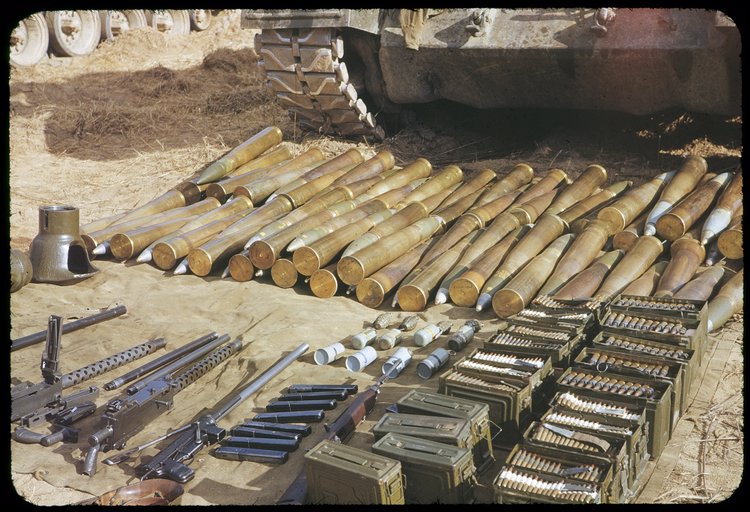
As the war progressed, the tankers in the Pacific, Army, and Marine, learned how to use the Sherman to great advantage. After each campaign they improved their game, and as far as I can tell there really wasn’t much cross-pollination in tank tactics between the Marines and Army. In both cases tankers trained at Fort Knox, and yes the Marines sent officers through the armor courses the Army taught there, seemed to try and shoehorn standard armor tactics into the war in the Pacific, and in most cases, they just didn’t work. The Marines also put together their own Armor school eventually.
The threats the tanker in the Pacific faced were very different. Since they rarely could pull far enough back, they faced the real risk of Japanese night raiders attacking them. As a counter, they came up with a system of digging a trench under the tank and putting sandbags around the suspension and they would even go so far as setting up one of the M1919 machine guns in a sandbagged nest right in front of the tank. They could back out of these positions and then return and pull right in after they were done for the day.
The Pacific tank had no tank versus tank worries, in the extremely rare cases of US tanks running into Japanese tanks, the Sherman dominated. Japanese tanks were not well armed, well armored, or very common, and a Bazooka was a very serious threat to any of them. The real threat to the Sherman in the Pacific was the 47mm AT gum, any and all large-caliber artillery the Japanese may have had around, mines, though not seriously until late in the war, and Japanese Suicide squads with pole mines and satchel charges.
 This M4 hybrid is loaded down with a lot of stuff. Probably in the Philippines.
This M4 hybrid is loaded down with a lot of stuff. Probably in the Philippines.
The climate of the various campaign locations in the Pacific was pretty diverse. Early on, in the SWPAO, places like New Guinea, Bougainville, and Tarawa are pretty close to the equator and hot and humid, the Philippines are also in the tropics. Fighting inside a tank in these areas was not pleasant, and it wasn’t unheard of for crewmembers to pass out from the heat and smoke inside the tank. The environment offered almost as much danger to the Pacific tanker as combat since there were several diseases the caused mass casualties, the main being malaria. The US was very aggressive at controlling the malaria problem, issuing preventive medication and spraying massive amounts of DDT to kill mosquitoes. Later in the war, the battles had left the tropics and were much like the battles in European climate-wise and the malaria risk fell off.
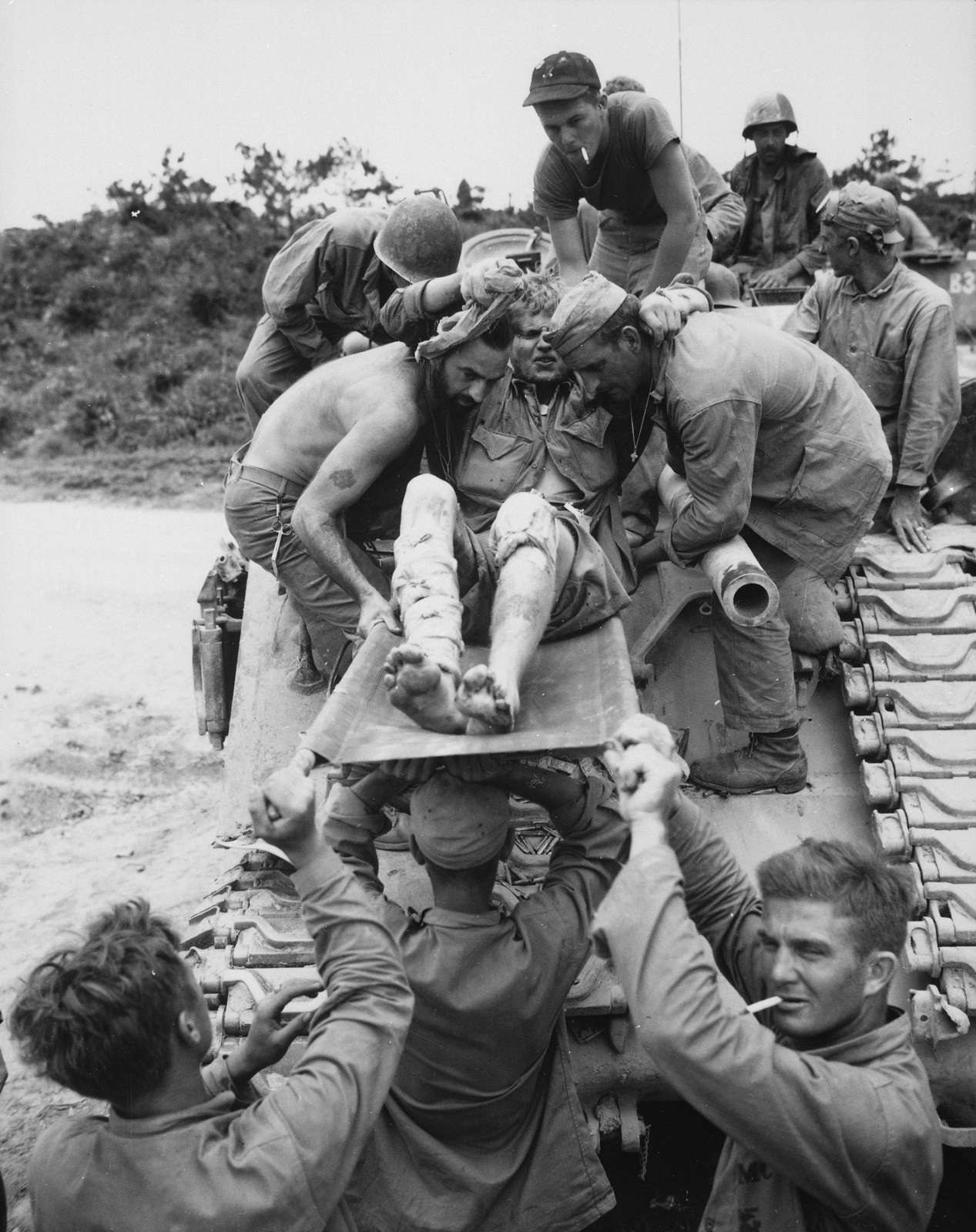
Sources: Armored Thunderbolt by Zaloga, Yeide’s TD and two separate tank battalion books, Sherman by Hunnicutt, Combat Lessons, The Rank and file, what they do and how they are doing it 1-7, and 9. Archive Awareness, Oscar Gilberts, Marine Tank Battles in the Pacific, M4 Sherman tank at war by Green, Tanks are a Might Fine Thing by Stout, the Lone Sentry, TM9-731b, TM9-752, TM9-754, TM9-759
